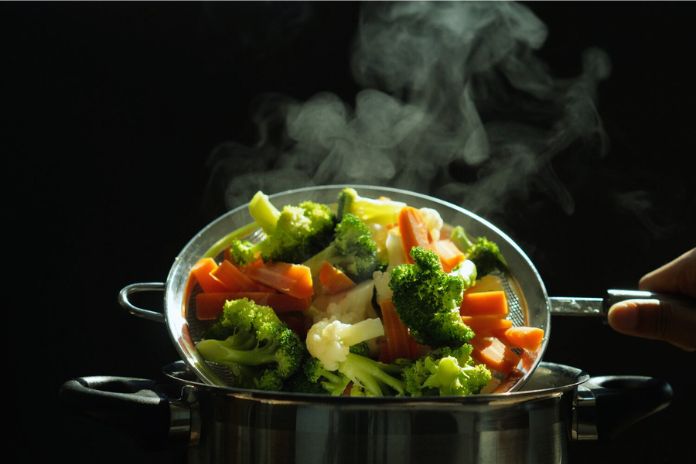Cooking in hot or cold water? How many times have you asked yourself this question in front of food? Here are the main rules. Cooking in water can appear to be devoid of particular criticalities and, in principle, quite simple: immerse the chosen food in a pot full of water and let it cook until the texture is soft. Every ingredient requires a different procedure, and not respecting it can compromise the final consistency, making it too hard or soft.
Let’s think, for example, of octopus or meat for which the temperature of the water is essential to prevent them from being rubbery or excessively fibrous. This reasoning extends to all food categories, from vegetables to eggs to fish. Let’s see together what rules to follow for optimal cooking.
Vegetables And Legumes
The many textures and different varieties of vegetables can challenge our intuition. So here comes an infallible rule that our grandmothers used to help us: always use cold water for vegetables that grow underground and prefer boiling water for those that grow in the sunlight. The reason is straightforward: while vegetables such as potatoes, carrots and turnips have a more fibrous and compact consistency and therefore need to soften with gentle and slow cooking, However, vegetables such as spinach, green beans or courgettis need to be blanched briefly to prevent them from falling apart.
However, there are no rules without exceptions, and this is the case: potatoes, for example, if cooked in their skins and whole, can be immersed in cold water, but on the contrary, if reduced to small pieces and without skins, they must be immersed in hot water to prevent them from absorbing excess. As far as peas and broad beans are concerned, immerse them directly in hot water; otherwise, they will tend to darken during cooking. Other legumes – such as beans, chickpeas and lentils – need cold water to soften them more easily.
Meat
The difference, in this case, is the use to which you will have destined your meat. If you want to prepare perfect and tender boiled meat, it will be cooked in hot water (but not boiling) to dissolve its fats and soften its texture slowly. The important thing is to maintain gentle and constant cooking that never reaches too high temperatures: in this case, there is the risk that the meat will become too fibrous and challenging again.
If the intention is to make a nice tasty broth, remember to put the meat in a saucepan filled with cold water. Low temperatures are also required for the cotechino, which must be left immersed in cold water for about an hour before starting the actual cooking. This step will prevent the skin from flaking excessively.
Eggs
The strictly cold water rule applies to most cooking methods that require immersing the eggs in water – such as hard-boiled or soft-boiled eggs. This will keep the shell compact and accurately calculate the cooking minutes from the moment of boiling. An exception is represented by poached eggs, which must be plunged into a vortex of boiling water so that the egg white is cooked instantly, enveloping the yolk.
Fish
Hot but not boiling water for fish requires gentle and slow cooking and temperatures not too high, which could risk drying out the texture excessively. As for the octopus, the rugged and fibrous meats need to be dipped in boiling water: the secret for even cooking is to dip it quickly three times to curl up the tentacles and thus make it fall into the water without floating.
Starches And Flours
The bogeyman of flour-based preparations, such as polenta or semolina, is the formation of annoying lumps. To obtain a smooth and homogeneous mixture, the trick is to dip the food in hot but not boiling water and start mixing immediately with the help of a whisk. As far as corn starch is concerned, however, you can dilute it in cold water to obtain a sort of batter and add it a little at a time in warm, not hot, preparations to avoid interrupting the cooking.
Also Read: How To Start Food Reeducation In 10 Steps

